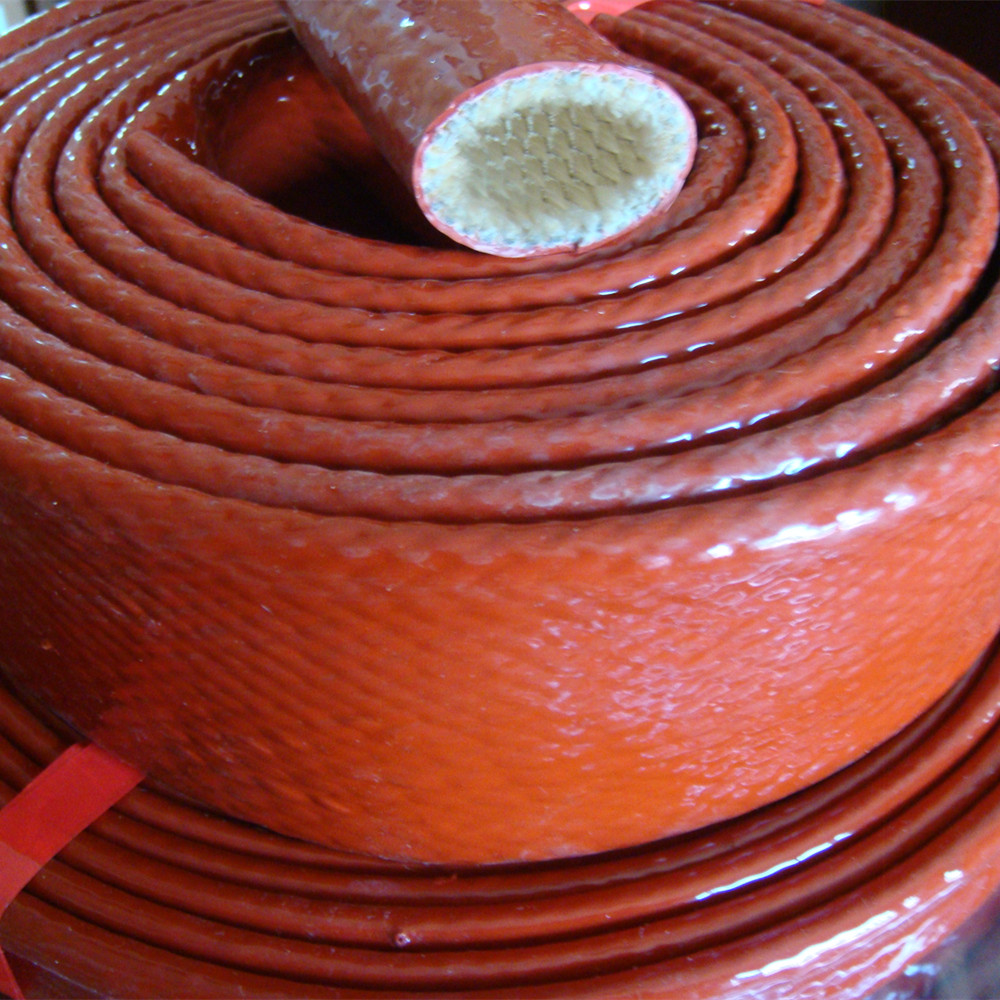Silikonbeschichtete Feuerlöschschläuche sind Schutzhüllen, die Schläuche, Drähte und Kabel vor hohen Temperaturen und Flammen schützen sollen. Hier ist eine Aufschlüsselung, woraus sie bestehen und warum sie verwendet werden:
Basismaterial: Der Kern der Hülse besteht normalerweise aus einem flexiblen, hochtemperaturbeständigen Material wie Glasfaser oder Aramidfasern (z. B. Kevlar). Diese Materialien bieten die nötige Festigkeit und Haltbarkeit, um rauen Bedingungen standzuhalten.
Silikonbeschichtung: Die äußere Schicht ist mit Silikonkautschuk beschichtet. Diese Beschichtung sorgt für zusätzliche thermische Beständigkeit und macht die Hülse äußerst widerstandsfähig gegen Hitze, Flammen und chemische Einwirkungen.
Hitzebeständigkeit: Die Silikonbeschichtung schützt das darunter liegende Material vor extremen Temperaturen und verhindert, dass Hitze die geschützten Komponenten erreicht.
Flammbeständigkeit: Es bietet eine Barriere gegen direkten Flammenkontakt, was in Umgebungen, in denen Brandgefahr besteht, von entscheidender Bedeutung ist.
Chemikalienbeständigkeit: Silikon weist eine gute Beständigkeit gegenüber verschiedenen Chemikalien und Ölen auf, wodurch sich die Hülse für Industrie- und Automobilanwendungen eignet, bei denen die Belastung mit diesen Substanzen häufig ist.
Haltbarkeit: Die Konstruktion der Hülle schützt sie vor Abrieb, Schnitten und anderen Formen mechanischer Beschädigungen und gewährleistet so einen langfristigen Schutz für die von ihr abgedeckten Schläuche oder Kabel.
Elektrische Isolierung: Neben dem Hitzeschutz können silikonbeschichtete Brandschutzschläuche auch elektrische Isoliereigenschaften bieten, die dazu beitragen, Drähte und Kabel vor Kurzschlüssen und Beschädigungen zu schützen.
Diese Hülsen werden häufig in Automobil-, Luft- und Raumfahrt- und Industrieanwendungen eingesetzt, wo hohe Temperaturen, Flammen und raue Umgebungsbedingungen herrschen.
